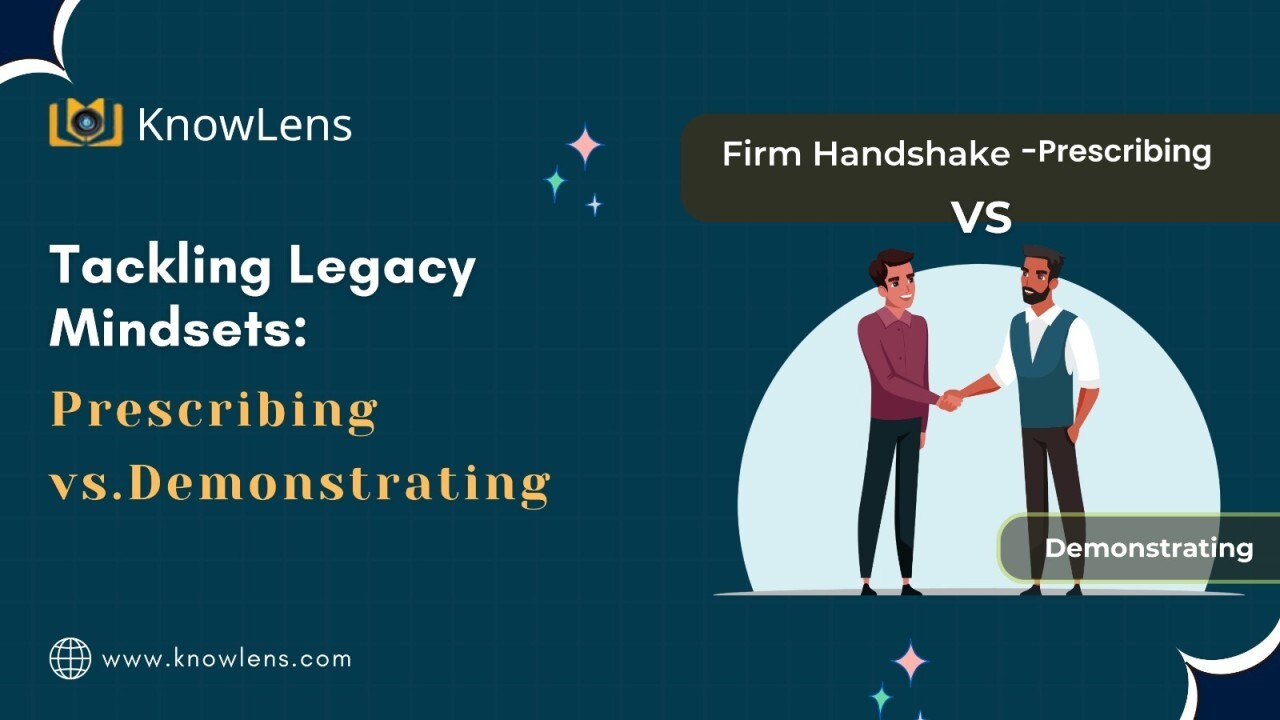We live in rapidly changing times – the world of VUCA (Volatility, Uncertainty, Complexity, Ambiguity). A buzzworld in management jargon but a reality in day-to-day life. Organizations are grappling with this reality and trying to adapt or rather leapfrog from legacy structures/process/mindsets into futuristic mode as we embrace the second quarter of the 21st century.
An excellent example of this in driving values and behavior change in organizations vs communicating let’s say product features. Values demands fundamentals changes in employees. How does a L & D person communicate these values. These values manifest themselves in behaviors.
Contrast this with the simplicity of communicating the changes in product features – a simple ppt to a scorm file to an assessment and voila – the training is complete as our employee is fully armed with the facts.
The L & D Approach : Prescribing Vs Demonstrating
This is where the L & D approach becomes crucial – do we prescribe/ instruct e.g. the product features? Or do we demonstrate.
The product example lends itself perfectly to a simple prescriptive instructional design – where there is only 1 product feature and 1 correct answer which the employee must master. E. g interest rate on savings account is 3.5 % for a bank employee or the price of Gold is Rs. 8,000 per gram for a jewelry employee. A simple scorm or ppt does the job, doesn’t it?
On the other hand, values and behaviors is so much more complex, ambiguous – there is no 1 right way and the situations can be infinite. How does one abstract, how does one at the same time connect it to real life ( and this can contradict with abstraction).
Lets take a deeper dive with some examples of potential values and their manifest behaviors.
Customer-Centricity as a Value: More Than Just a Buzzword
Imagine trying to teach customer centricity as a value and a set of behaviors.
You could have indicative content like this:
Customer Centricity (Definition)
“It is a reflection of our ability to put the customer first, focus on what is required for customer delight and ensure our behaviors and skills are aligned to this. “
Beautiful words – conceptually perfect but what does it mean for a foreman in a factory or a visual merchandiser at a retail store or a software developer working on an onsite project.
Customer Centricity (Behaviors)
Lets take an example of a specific behavior under customer centricity
“Build customer relationships through timely, accurate and responsive communication”.
Again conceptually simple – but probably these “prescriptive” words have a limited effectiveness, isn’t it? – in through one ear and out through the other.
That’s where the power of Demonstrative learning comes in. This same behavior as seen through the example of a video of a relationship manager at a bank. Customer calls but the relationship manager (RM) is busy. The RM does not respond saying that they are busy on another call. The RM forgets to call back.
We then show a scene with the customer highly irate as they needed the interest certificate for the year urgently and it’s the last date for filing tax. Seeing the customer irate is a sure shot way for any RM to remember this lesson and what the essence of customer centricity is.
The Right Mix Of Prescriptive Vs Demonstrating
Quite often it so happens, you need some knowledge (read as prescriptive) and some demonstrative skills for a comprehensive mastery of the topic in question. For instance a list of values is well covered through the prescriptive method. But a deeper essence of what these mean is covered through demonstration.
Knowlens & The Prescription / Demonstration
We have worked in several areas where we worked on combinatory approaches of prescriptive and demonstrative approaches towards deeper internalization.
This has been for example in changing legacy mindsets towards use of data in manufacturing, or demonstration of sales skills or role definition based video role plays. These are often used in conjunction with scorms etc for the conceptual knowledge.
Traditionally prescription has been the bulwark of L & D focus but increasingly we see demonstration increasing in its importance.

